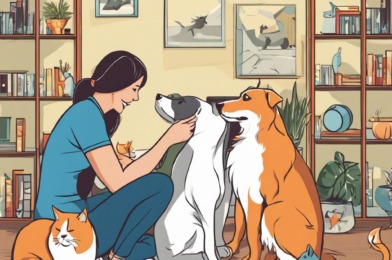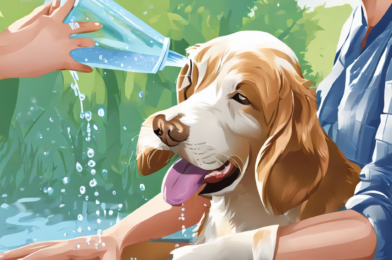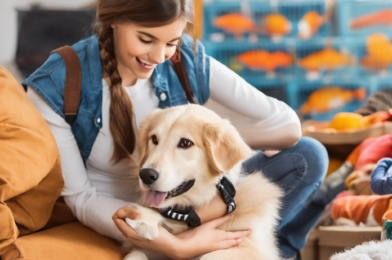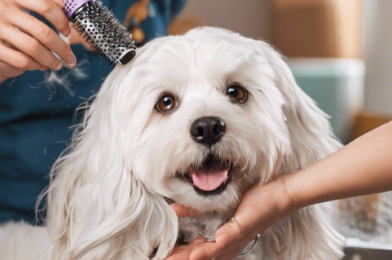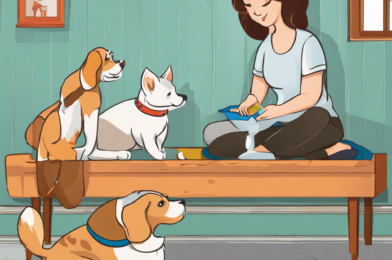Just like humans, our furry friends need to stay active to maintain their health and well-being. Regular exercise is crucial for pets, offering a multitude of benefits that ensure they lead happy and healthy lives. Not only does it keep them physically fit, but it also stimulates their minds, enhances their overall quality of life, and strengthens the bond between pet and owner. A sedentary lifestyle can lead to various health issues in pets, including obesity, joint problems, and decreased mobility, so it is important to make sure they are getting enough activity.
One of the most important benefits of regular exercise for pets is maintaining a healthy weight. Obesity is a common problem in household pets, especially in cats and dogs, and it can lead to a host of other health issues such as diabetes, respiratory difficulties, and joint pain. By ensuring your pet gets enough exercise, you can help them maintain a healthy weight and lower the risk of these associated problems. For example, regular walks or active playtime can help dogs stay trim and improve their overall fitness.
Exercise also provides an outlet for pets to release energy and stimulate their minds. Boredom and lack of stimulation can lead to destructive behaviors, such as chewing furniture or excessive barking. Engaging your pet in regular physical activity helps redirect their energy and provides mental stimulation, keeping them engaged and entertained. Playing fetch with a dog, for instance, not only provides physical exercise but also mental stimulation as they focus on the task.
Additionally, regular exercise can help improve your pet’s overall behavior and discipline. A tired pet is often a well-behaved pet, as adequate physical activity can help reduce excessive barking, destructive behaviors, and hyperactivity. Exercise provides an outlet for your pet to expend their energy in a positive way, leading to improved discipline and better overall behavior. Establishing a routine with consistent exercise can also aid in house training and encourage good manners.
The type and intensity of exercise will depend on your pet’s age, breed, and health status. Younger pets may have boundless energy and benefit from vigorous activities, while older pets or those with health conditions may require more low-impact exercises. Consult with your veterinarian to determine the appropriate exercise routine for your pet, ensuring it is tailored to their specific needs and abilities. They can advise on the duration, frequency, and type of activities that are safe and beneficial for your furry friend.
Variety is also key to keeping your pet engaged and motivated. Mix up their exercise routines to include different activities such as walking, running, swimming, or playing with toys. Exploring new environments, such as different parks or trails, can also add excitement and stimulation for your pet. By incorporating a range of activities, you can keep them interested and engaged, ensuring they stay active and healthy.
Remember, the benefits of regular exercise extend beyond the physical. It improves your pet’s mental and emotional well-being, enhancing their overall quality of life. Taking the time to exercise with your pet also strengthens the bond between you, fostering a loving and healthy relationship. Whether it’s a game of fetch, a leisurely walk, or a swim, these shared activities create opportunities for fun, enrichment, and connection.
In addition to the benefits for your pet’s health, regular exercise can also have a positive impact on your own well-being. Engaging in physical activity with your pet can help improve your fitness level and provide a source of stress relief. It encourages you to be more active and can enhance your mood and energy levels. Spending time outdoors in natural environments and soaking up fresh air are added bonuses for your mental and physical health.
However, it is important to be mindful of your pet’s limits and not over-exert them. Just as humans can experience injuries or exhaustion from overexercising, the same can happen to our furry companions. Be aware of the signs of overexertion in your pet, such as excessive panting, sluggishness, or difficulty breathing. Always provide ample rest periods during and after exercise, and ensure they have access to fresh water to stay hydrated.
The importance of regular exercise for your pet’s health cannot be overstated. It is a key component of responsible pet ownership and can add years of health and happiness to your furry companion’s life. By incorporating exercise into your pet’s daily routine, you are not just improving their physical health, but also nurturing their mental and emotional well-being. So, grab those leash and toys, and get ready to have some fun and adventurous workouts with your beloved pet!
In conclusion, regular exercise is a vital component of maintaining your pet’s overall health and happiness. The benefits are extensive – from improving physical fitness and preventing health issues to providing mental stimulation and enhancing discipline. Tailoring the type and intensity of exercises to your pet’s individual needs and mixing up routines keep things engaging. With regular exercise, you can help your furry friend live their best life, while also strengthening the bond between you. So, make sure to prioritize those daily walks, play sessions, and active adventures for a healthy and joyful pet companion.

